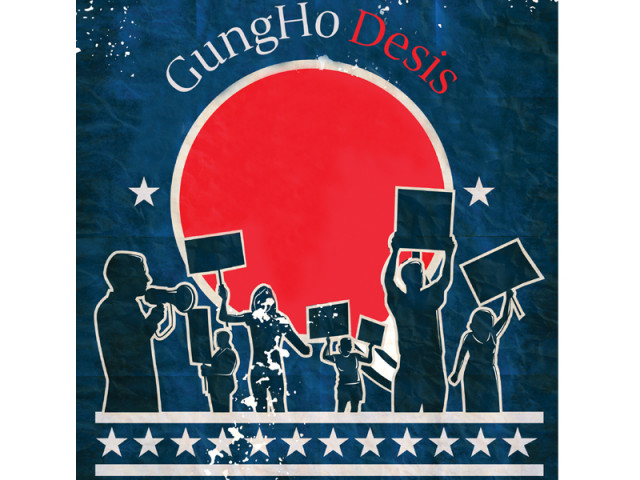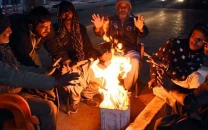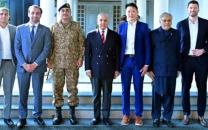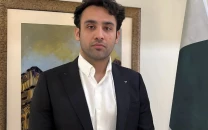GungHo desis
Immigrants may be few and far between in the Occupy rallies, but some stand out for their valuable contributions.

GungHo desis
After all, according to him, he was the one who “sparked off” the Occupy Miami movement on October 1, 2011, with a group of friends when he got unemployed. “We had our first meeting at a statue at the main plaza in the centre of the town where most traffic in Miami is. So we occupied that place,” he said.
During later rallies, says Malik, people of colour — Latinos, African-Americans and South Americans — far outnumbered whites in general but the presence of South Asians was sorely lacking. Even the dominant agenda of immigration reform at Occupy Miami failed to drive South Asians out of their homes, which was in stark contrast to some of the rallies outside of Florida, including Occupy Wall Street in New York, where the gatherings comprised predominantly white people.
“South Asian youth would get involved, but they would invariably find themselves unable to attend because their parents were afraid that the controversial nature of the protest could affect their children’s future prospects,” he says. That was when support came from unexpected quarters: a segment of the older generation — Indian, Bangladeshi and Pakistani immigrants — who owned convenience stores and cabs.
“Those convenience store guys would come by and give food. There were people who were cab drivers, who would help me get rides,” said Malik. They usually came from lower-income homes in Pakistan, India and Bangladesh, he said, and struggled as immigrants in the US. “They understood many of the immigration issues discussed in the Occupy Movement.”
It was a topic that Malik, himself born to immigrant parents who struggled to establish themselves in the US, was intimately familiar with. In the last 30 years his father had worked as a cab driver, bus boarder and waiter before finally being able to put together enough cash to buy his own restaurant. Now in his seventies, he was planning to sell the restaurant so that he could retire along with his wife, who works as a nurse.
Malik was born in the US, but he experienced first-hand what diversity of views in the US could lead to. He worked at the Council of American Islamic Relations, a prominent Muslim civil liberties organisation, while pursuing a Masters degree in Human Rights, but soon ran into problems for being outspoken about his political views.
“South Florida is probably the most reactionary in the US. We have the most reactionary groups that are in power,” he said. “You have the Cuban right wing and then you have these Jewish right-wing Zionists. They may be ideologically liberal, at least on social issues. But when it comes to foreign policy, if you’re very outspoken about that you can find yourself in different kinds of problems here,” he said.
Malik went on to work for the American Civil Liberties Union, but budget cuts in the organisation left him unemployed. And so by late September, he was directing his energy into helping initiate Occupy Miami.
Twenty-six-year-old Indian-American Harish Ibrahim Patel has a similar story to tell. He became a part of the Occupy Chicago movement when he learnt that many issues raised by the movement resonated with his own concerns and beliefs, and that many people of colour were actively involved. They were people “that we didn’t see in the news because what was apparent was mostly white people,” says Ibrahim, who has a Political Science and Philosophy degree from the University of Illinois.
Ibrahim agrees that South Asians in the Occupy Movement were few and far between but believes that is not because they don’t want to be there. “People are actually afraid of coming out to these protests,” he explains. “If you wear a hijab and go to a protest you are going to stand out. If you are a brown person, a Pakistani or an Indian, and you show up to a rally you are going to stand out.”
Born in Baroda, Gujarat, Ibrahim’s family had moved to Chicago when he was 14. Ibrahim helps organise Occupy Chicago meetings and events, and does outreach work for the movement, including making what he called “critical connections” — relationships between activists both young and old and everyone in between. The movement has seen phenomenal growth, starting from 15 to 20 members and quickly rising to a size of almost 500 in one of the earliest general assembly meetings that he attended.
Mass deportations, immigration reform and anti-terrorism laws may be some of the reasons that have deterred South Asians, and Muslims in general, from coming out on the streets to protest. But despite low visibility in street protests, Ibrahim saw greater political consciousness and civic engagement among South Asians of his generation. “In part, [that was] due to the realisation that political decisions affect them both in their adopted country and the ones they have left behind,” he says.
This political awakening was what inspired 33-year-old Ali Hayat, a native of Sialkot, who decided to take part in Occupy New York when the movement was steaming ahead full throttle in October last year. The idea of a people exercising their right to assemble and express their demands appealed to Hayat. It resonated with the political actions of the 1980s when the progressive movement in Pakistan was under way. He had immigrated to the US in 1995, and after completing a PhD in Political Science from City University, New York, Hayat committed to full-time applied research in 2008. Much of his work focused on gathering statistics from developing countries such as Afghanistan, Iraq and Pakistan. Armed with the expertise of collecting and crunching data, Hayat went to Zuccotti Park, New York, with a questionnaire in hand and an objective to give voice to the protesters. He went on to conduct surveys both in New York and Washington, DC, and thus began his OWS Public Opinion Project.
“I thought of the idea for an OWS Public Opinion Project after getting frustrated listening to news media and so-called experts talk about the movement without basing their statements on any empirical data,” he said.
While he may not have directly taken part in the protest, his aim was to disseminate information. “I agreed with some of the demands of OWS but, most importantly, I was genuinely interested in discovering what these demands were and sharing this information with the general public,” he said.
A clearer picture of who the occupiers were, in his opinion, would help the movement achieve clarity. “All these stereotypes were being assumed that this group comprises hippies and people who don’t have jobs are bums, and all that,” said Hayat. But the project revealed the high level of college education among the protesters in these cities.
Manissa McCleave Maharawal fits that profile perfectly. An Occupy Wall Street activist of South Asian descent, who is pursuing a PhD in Anthropology, she was present late September at a General Assembly meeting in Zuccotti Park with a small group of friends, all South Asians, who had started attending the sessions to learn more about the movement. The Call to Action committee, a core group of facilitators and organisers, had put together a manifesto for the movement called The Declaration to Occupy New York. It was a guiding document to be used by anyone and everyone who cared to know what the movement was all about.
The group held a copy of the declaration as it was being read, and a line about race caught their attention: “As one people, formerly divided by the colour of our skin, gender, sexual orientation, religion, or lack thereof, political party and cultural background, we acknowledge the reality: that there is only one race, the human race…”
Immediately Manissa’s group knew there was a problem with the text and it had to be changed. Were the people responsible for drafting the resolution oblivious to issues of oppression and racism that had been around for centuries and were still practiced, they wondered.
Manissa and her friends demanded change. Even as the organisers hesitated, her group stood their ground. “The language of the proposal was insensitive and not inclusive, and not something we could agree [on], and so we blocked it based on the language and ended up rewriting it,” Manissa would later relate.
The declaration now reads: “As one people, united, we acknowledge the reality: that the future of the human race requires the cooperation of its members...”
According to Manissa, it was a minor change in text but important in terms of what it signified. The “issues of inequality and corporate control … the idea is that they are everyone’s issues,” she insisted.
For Manissa, Occupy Wall Street encapsulated the rage against all that had gone wrong with America, and her own experiences testified to that. Manissa’s parents had met in India. Her mother, an American, was visiting when she met Manissa’s father, an Indian, and they fell in love. After she was born, her family made the decision to move to the US — a country where “people could change and be whoever they wanted to be, and rise up from their conditions.” But her father, who started out as a cab driver, never stopped feeling like an outsider and saw the American dream as an illusion.
Manissa and her brother grew up in a household barely able to meet expenses, and despite the fact that she is now in graduate school pursuing a PhD, her family’s struggles came to define her. In her words, the “the American narrative” is fraught with income inequality and racism — a constant theme.
However small the footprint of South Asians in the Occupy Movement, the contributions some of them are making are important. They are speaking out against injustices meted out to them instead of suffering in silence. It may or may not bear fruit but at least the dialogue for change has begun and they are a part of it.
“In a city that is so ridiculously segregated people were having very passionate, real conversations and working together to figure out how we were going to occupy,” says Malik of the movement in his hometown Florida. “For the first time, I saw people passionately speaking about their lives.”
Correction: An earlier version of this articke had incorrectly mentioned Harish Ibrahim Patel as Haris Ibrahim. The correction has been made.
Published in The Express Tribune, Sunday Magazine, July 8th, 2012.


















COMMENTS
Comments are moderated and generally will be posted if they are on-topic and not abusive.
For more information, please see our Comments FAQ